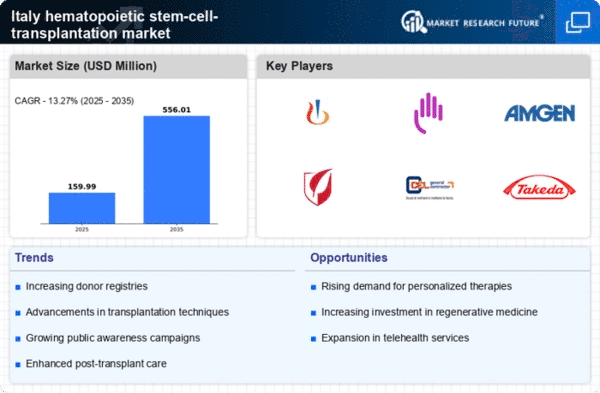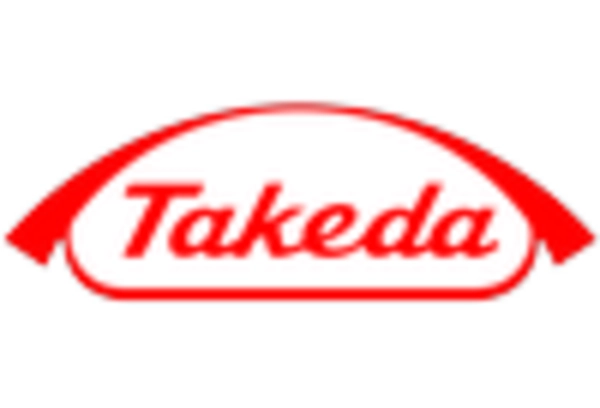Rising Incidence of Hematological Disorders
The increasing prevalence of hematological disorders in Italy is a primary driver for the hematopoietic stem-cell-transplantation market. Conditions such as leukemia, lymphoma, and multiple myeloma are becoming more common, necessitating advanced treatment options. According to recent health statistics, the incidence of leukemia in Italy has risen by approximately 3% annually. This trend indicates a growing patient population that may require stem-cell transplantation as a therapeutic option. As healthcare providers seek effective treatments, the demand for hematopoietic stem-cell transplantation is likely to increase, thereby propelling market growth. Furthermore, advancements in transplantation techniques and post-transplant care are expected to improve patient outcomes, further driving the market as more patients are referred for these procedures.
Increased Investment in Healthcare Infrastructure
The Italian government's commitment to enhancing healthcare infrastructure is a significant driver for the hematopoietic stem-cell-transplantation market. Recent investments aimed at modernizing hospitals and expanding specialized treatment centers are expected to improve access to advanced therapies. For example, the Italian Ministry of Health has allocated approximately €500 million for the development of oncology units, which include facilities for stem-cell transplantation. This investment is likely to facilitate better patient care and increase the number of transplants performed annually. Furthermore, as healthcare facilities upgrade their capabilities, the hematopoietic stem-cell-transplantation market may experience accelerated growth, with an anticipated increase in the number of trained professionals and improved patient management systems.
Growing Awareness and Education on Stem-Cell Therapies
The rising awareness and education regarding stem-cell therapies among healthcare professionals and the general public are driving the hematopoietic stem-cell-transplantation market. Initiatives aimed at educating both patients and practitioners about the benefits and risks associated with stem-cell transplants are becoming more prevalent in Italy. This increased awareness is likely to lead to higher patient referrals for transplantation, as individuals become more informed about their treatment options. Additionally, healthcare providers are increasingly participating in training programs and workshops focused on stem-cell transplantation, which could enhance the quality of care provided. As a result, the market may see a notable uptick in demand, potentially increasing by 4% annually as more patients seek these innovative therapies.
Supportive Regulatory Environment for Stem-Cell Research
The supportive regulatory environment in Italy for stem-cell research and transplantation is a crucial driver for the hematopoietic stem-cell-transplantation market. The Italian government has established frameworks that encourage research and development in this field, facilitating clinical trials and the introduction of new therapies. Recent regulatory changes have streamlined the approval process for innovative treatments, which may lead to a surge in new stem-cell therapies entering the market. This regulatory support is likely to foster collaboration between academic institutions and healthcare providers, enhancing the overall landscape for stem-cell transplantation. As a result, the market could experience accelerated growth, with an expected increase in the number of approved therapies and clinical applications in the coming years.
Technological Advancements in Transplantation Techniques
Technological innovations in transplantation techniques are significantly influencing the hematopoietic stem-cell-transplantation market. The introduction of minimally invasive procedures and improved grafting techniques has enhanced the safety and efficacy of transplants. For instance, the use of robotic-assisted surgeries and advanced imaging technologies has reduced recovery times and complications. In Italy, hospitals are increasingly adopting these technologies, which could lead to a projected market growth of around 5% annually over the next few years. Additionally, the development of personalized medicine approaches, including tailored conditioning regimens, is likely to improve patient outcomes and expand the patient base eligible for transplantation. As these technologies continue to evolve, they are expected to play a crucial role in shaping the future of the hematopoietic stem-cell-transplantation market.

















Leave a Comment